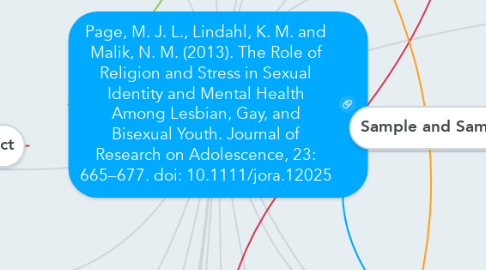Page, M. J. L., Lindahl, K. M. and Malik, N. M. (2013). The Role of Religion and Stress in Sexual Identity and Mental Health Among Lesbian, Gay, and Bisexual Youth. Journal of Research on Adolescence, 23: 665–677. doi: 10.1111/jora.12025
por Doreen James


